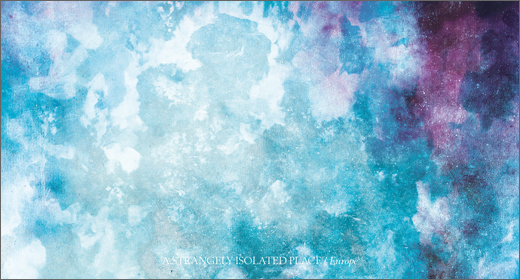Featuring ten new tracks of rigorously and restrictively composed, atmospheric, minimal and synth-worshiping ambient electronica.
Ryan Griffin’s A Strangely Isolated Place follows up Merrin Karras’ rigorously and restrictively composed, atmospheric, minimal and synth-worshiping album Apex with The Infinity Room by ambient veteran Dennis Huddleston’s 36, featuring ten new tracks of rigorously and restrictively composed, atmospheric, minimal and synth-worshiping ambient electronica. Luckily, those similarities aside, the two albums couldn’t be more different.
Inspired by the idea that his own single-room studio is the nexus for an infinite range of possibilities, The Infinity Room plucks a minimal set of elements from a galaxy of available options, creates a looped, melodically rich slice of ambient electronica and iterates upon it, each new track informed and inspired by the last.
Huddleston clearly cites the influence of past masters like John Carpenter, Vangelis and Tangerine Dream together with inspiration from a recently found love of Boards of Canada, Oneohtrix Point Never or Sinoia Caves. From the CRT smeared, seventies color television test pattern sleeve art or the use of lurid, lolly-pop red on the vinyl through to the nostalgic, often vintage sound palette, this is both obvious and prescient at a time when movie and TV soundtracks from the late seventies and early eighties are once again high profile thanks in large part to the bafflingly popular and strikingly inauthentic TV series Stranger Things.
A classic example is when 36 veers the furthest away from his recognizable ambient sounds on “Room 2” and embraces a Ghost Box/Pye Corner Audio aesthetic of dusty overdubs, powdery background hiss, thumping kick drums and clacking percussion to propel the almost romantic synth melodies forward. It’s a shame this changing up of the 36 sound doesn’t occur again, as it’s one of the most evocative and affecting pieces here.
“Room 3” is similar, though more consistent with Carpenter-esque movie themes, while other tracks like the wistful “Room 4” or BoC-heavy and sonically crushed and burnt “Room 5” are more recognizably 36 in origin. “Room 7” is majestic and twinkling, its melodies full of resignation and sadness, while the listless and emotionally blank “Room 9” takes a detour into heady atmosphere, depth of focus and Vangelis swoon.
It wouldn’t be a 36 album if it didn’t attempt to break your heart, and several key tracks engage in a full-on assault on the aorta and tear glands. If you aren’t emotionally crushed by the sea-spray and brightly-colored but infinitely melancholic “Room 6” or the almost funereal, ghostly exhalations of “Room 8” then just try and escape the devastating emotional KO of “Room 10″‘s rain-drenched shores and tear-stained eyes.
A sample-surf of The Infinity Room gives the misleading impression that it all sounds a little samey. It’s a kind of consciously generative work, even though small new elements are introduced here and there, and in tandem with the exceptionally well formulated artwork one could imagine it working extremely well as an art installation of sorts.
It’s a rare sight to see Huddleston release anything on another label, and unlike other artists who explore different tangents of their sound, he has chosen not to use a different alias, keeping The Infinity Room firmly in the 36 catalog. It’s a hugely successful and affecting project, and one can only hope he will continue to explore new sonic vistas in the future.
The Infinity Room is available on A Strangely Isolated Place.

























![Romanowitch :: A critical season substitute (glitch.cool) — [concise]](https://igloomag.com/wp/wp-content/uploads/2025/03/romanowitch-a-critical-season-substitute_tape_feat-75x75.jpg)

